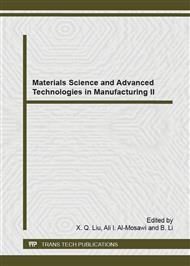p.175
p.183
p.187
p.192
p.196
p.200
p.205
p.210
p.215
Fatigue Crack Propagation Life Prediction of 2A12 Aluminum Alloy Based on VCCT
Abstract:
The fatigue crack propagation behavior of the prior corrosion 2A12 aluminum alloy fastener involving a central hole was investigated. The virtual crack closure technique (VCCT), is straightforward and not sensitive to the FEA mesh size, was carried out to calculate strain energy release rate and SIFs of AA 2A12 under different stress levels and corrosion years. Based on the VCCT, the simulation carried out to analyze the corrosion fatigue crack growth behavior. It was proved to be convenient to simulate the crack propagation life and the predicted crack growth curve was in good agreement with the experimental results.
Info:
Periodical:
Pages:
196-199
Citation:
Online since:
December 2014
Authors:
Price:
Сopyright:
© 2015 Trans Tech Publications Ltd. All Rights Reserved
Share:
Citation:


